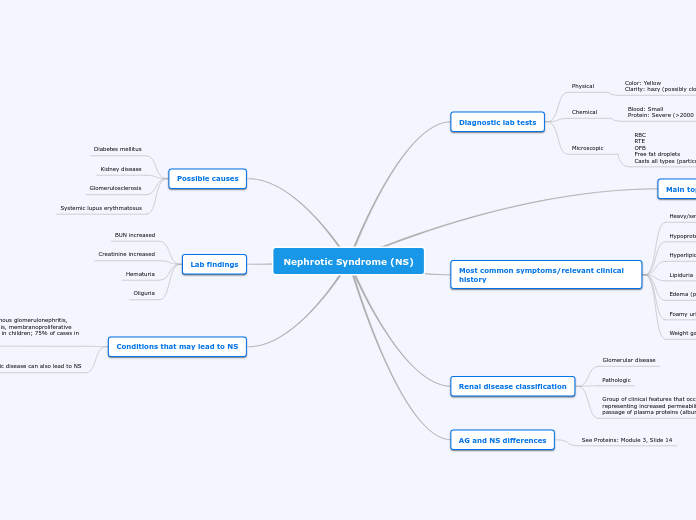Nephrotic Syndrome (NS)
Diagnostic lab tests
Physical
Color: Yellow
Clarity: hazy (possibly cloudy)
Chemical
Blood: Small
Protein: Severe (>2000 mg/dL) (>3.5 g per 24hrs)
Microscopic
RBC
RTE
OFB
Free fat droplets
Casts all types (particularly, fatty, waxy, RTE)
Main topic
Most common symptoms/relevant clinical history
Heavy/severe proteinuria (greater than or equal to 3 g/day)
Hypoproteinemia
Hyperlipidemia
Lipiduria
Edema (pitting)
Foamy urine
Weight gain, fatigue
Renal disease classification
Glomerular disease
Pathologic
Group of clinical features that occur simultaneously representing increased permeability of the glomeruli to the passage of plasma proteins (albumin)
AG and NS differences
See Proteins: Module 3, Slide 14
Possible causes
Diabetes mellitus
Kidney disease
Glomerulosclerosis
Systemic lupus erythmatosus
Lab findings
BUN increased
Creatinine increased
Hematuria
Oliguria
Conditions that may lead to NS
Minimal change disease, membranous glomerulonephritis, focal segmented glomerulosclerosis, membranoproliferative glomerulonephritis (90% of cases in children; 75% of cases in adults
Systemic disease can also lead to NS
Diabetes mellitus, SLE, amyloidosis, malignant neoplasms, infections, renal response to nephrotoxic agents (drugs, poisons)
